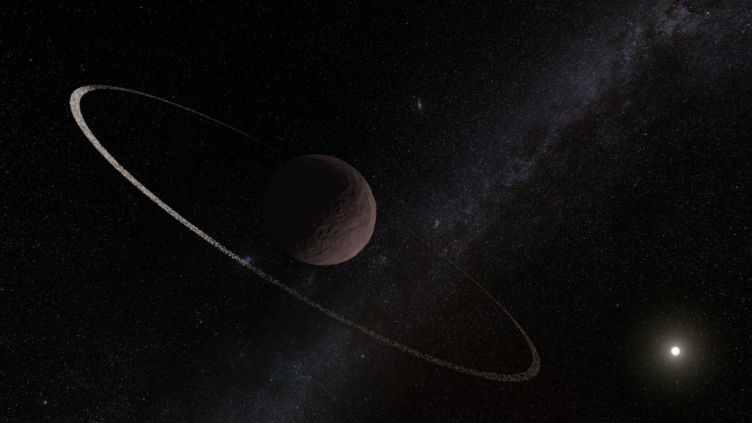Astronomers discover new ring system in our Solar System

An international team of astronomers led by the Federal University of Rio de Janeiro in Brazil have discovered a ring system around Quaoar, a Pluto-sized dwarf planet orbiting beyond Neptune in our Solar System.
The researchers made this discovery using the HiPERCAM mounted on the Gran Telescopio Canarias (GTC), the largest and one of the most advanced optical and infrared telescopes in the world. Developed by scientists at the University of Sheffield, HiPERCAM is a high-speed, extremely sensitive camera designed for the study of rapid variability in the Universe.
All of the previously known ring systems in our Solar System orbit close to the parent body, but the newly-discovered ring system around Quaoar is unique because it lies at a distance of over seven planetary radii - twice as far out as what was previously thought to be the maximum radius according to the Roche limit, the outer limit of where ring systems were thought to be able to survive.
The discovery, published in the journal Nature, poses a challenge to current theories of how ring systems are formed.
"It was unexpected to discover this new ring system in our Solar System, and it was doubly unexpected to find the rings so far out from Quaoar, challenging our previous notions of how such rings form. The use of our high-speed camera - HiPERCAM - was key to this discovery as the event lasted less than one minute and the rings are too small and faint to see in a direct image," Professor Vik Dhillon, co-author of the study from the University of Sheffield's Department of Physics and Astronomy said in a statement.
- READ MORE ON:
- dwarf planet Quaoar
- Quaoar ring system
- astronomy
- HiPERCAM camera










